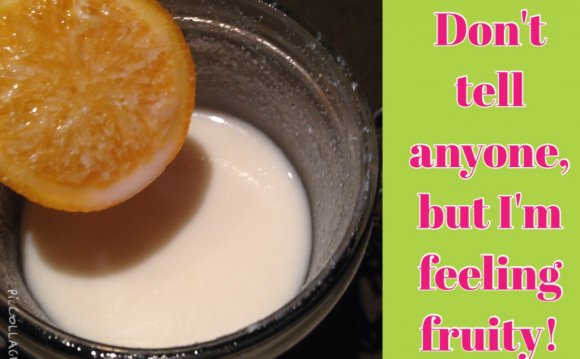
Milk kefir is a sour, drinking yogurt, and it was the first ferment I rabidly consumed that actually solved a particular body issue for me. The first thing to know about milk kefir is that you need a culture to make it (the kefir grains pictured above) and that getting a culture is well worth it, even if you have to buy it, although I do recommend searching hippy listserves, craigslist and other sites for people willing to part with their grain babies before you buy.
ABOUT MILK KEFIR GRAINS
Although they’re usually called grains, these little guys are actually SCOBYs or symbiotic communities of bacteria and yeast, so for those of you who avoid grains, no worries! Their name most likely stems from their “grainy” appearance (although wouldn’t “kefir cauliflowers” have been more appropriate?) so go forth and kefir all ye Primals. These particular cultures are extremely rich in probiotic bacteria and yeast. The most complete list of kefir grain microbes (both yeast and bacteria) that I’m aware of is located on Dom’s Kefir in-site. It is quite a long and well-sourced list. The “food” of milk kefir grains is lactose or the sugars that naturally occur in milk. The kefir culture transforms these dairy sugars into a few different things, including lactic acid, CO2 and small amounts of alcohol. They also synthesize plenty of interesting enzymes and compounds during the fermentation process. I highly recommend poking around on Dom’s site, linked above, if you’re interested in microbial information and links to studies that have been performed to date.
HOW TO CREATE THE RIGHT SELECTIVE ENVIRONMENT FOR MILK KEFIR
The essential elements for successful milk kefir fermentation:
- Temperature – Room temperature is great for milk kefir. I have found that anything in the 64 to 78 degree F (17.7-25.5 C) range will work just fine. In my experience, a broad range of “room” temperatures work well for kefir, but major changes in temperature will impact the speed at which your kefir ferments. When the seasons change, your kefir will most likely need a little adjustment time. Warmer temperatures will speed up fermentation, lower temperatures will slow it. I find that in periods of seasonal change, my kefir is sometimes thin in consistency or very yeasty smelling. I don’t let this bother me too much, as they always come out fine after a week or two of adjustment.
- Aerobic or Anaerobic? – There are different kinds of fermentation. Some require air, others require no air. Milk kefir is technically an anaerobic process, but you don’t need to work to keep your grains submerged like you do when pickling vegetables. The milk itself seems to be a sufficient barrier to air, and many of your grains will stay at the bottom of your vessel during fermentation.
- Fermentation Time – There is definitely some subjectivity here, although you do want to care for your grains by giving them a somewhat balanced living environment. The longer they ferment the more acidic your kefir will be and the lower it will be in lactose. I don’t recommend fermenting for longer than 48 hours. Although these grains are acid tolerant, even they have their limits. If you like a lower lactose product, I recommend continuing fermentation (secondary fermentation) after removing the grains. If you want to experiment with longer fermentation times, you can always wait until your grains grow enough to split and then use your spare set for experimentation. My preferred time is 24 hours during stable periods. When the weather gets very cold, they usually need at least 36 hours. When the weather gets very hot, they are occasionally done in 12 hours.
MILK CHOICE
You can make milk kefir from just about any kind of milk, but please read below exceptions and details. Just remember to give your grains a period of adjustment when you switch from one milk to another.









